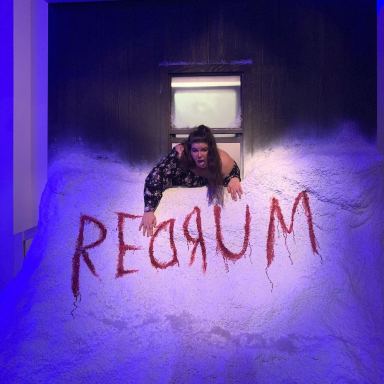1950s Horror Movies, Ranked/Explained
Horror movies from the 1950s reflect a unique turning point in global cinema.

Table of Contents
Introduction
Horror movies from the 1950s are entirely different from everything that preceded them because the 1950s ushered in a new world that was completely different than the world that came before.
The planet was still reeling from the 75 million deaths in World War II. It would soon become evident that totalitarian communism was responsible for at least as many deaths as World War II and possibly tens of millions more. And due to nuclear technology, for the first time in history, humans had developed the ability to entirely wipe out humanity. Therefore, the anxieties of this new and scary world were reflected in the horror films of the 1950s. Nuclear power’s destructive force was a new and common motif.
Except for 1932’s King Kong, gigantic rampaging monsters had never been a common feature of horror films, but the 1950s were stacked wall-to-wall with gargantuan and uncontrollable primitive threats to human existence.
Ever since 1947’s Roswell incident, UFOs became a national obsession, and this, tool, was reflected in the endless invading aliens of 1950s horror. Often, the invading space aliens were indistinguishable from the looming threat of communist infiltration that was a national obsession at the time.
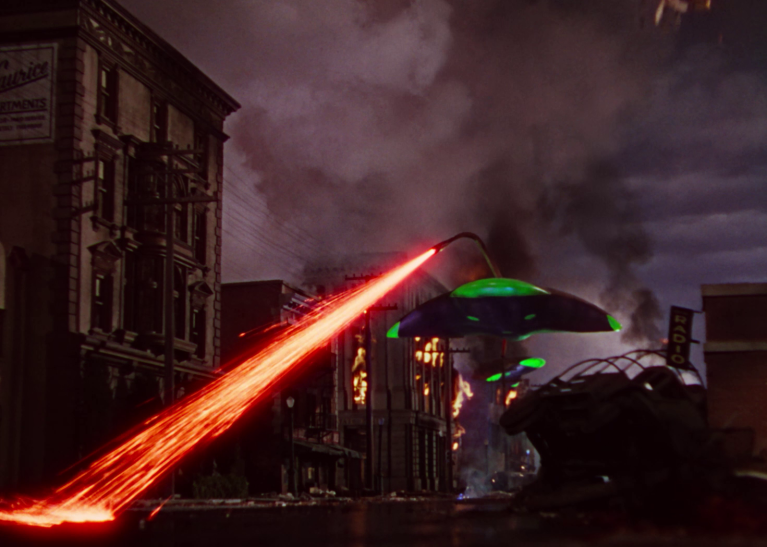
Youth culture, reflected in rebellious icons such as James Dean and Elvis Presley, was a relatively new phenomenon; therefore, many 1950s horror films featured young rebels doing battle against various invading monsters and existential threats.
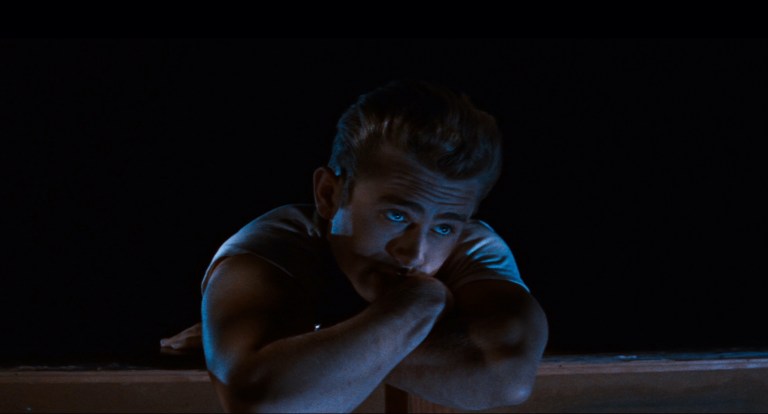
Drive-in theaters started to peak in the late 1940s and held sway over the culture into the 1970s. Many horror movies from the 1950s went straight to the drive-in circuit. To compete with the emergence of television, studios used gimmicks such as 3D and Cinerama. Let’s review 1950’s horror cinema.
Top 10 Horror Films from the 1950s
Here are ten of the quintessential horror films from this unique decade in American history.
10. Creature From the Black Lagoon (1954)
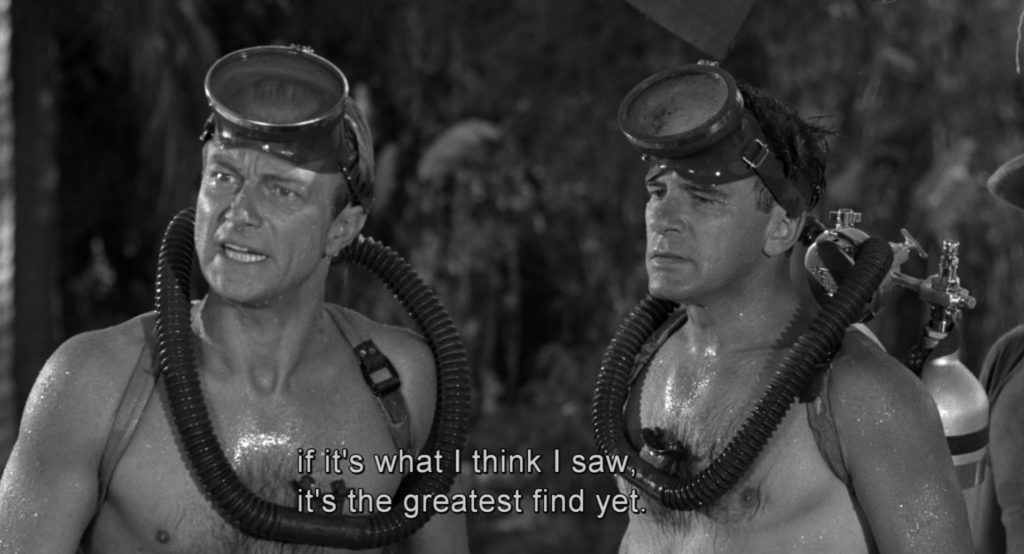
This 3D classic begins with a geologist in the upper reaches of the Amazon who finds a fossilized web hand that suggests an evolutionary link between sea animals and land animals. Encouraged, the geologist returns to the Amazon with a group of scientists to search of the rest of the creature’s skeleton. They venture further up into the wilds of the untamed river until they are attacked by the titular creature—a humanoid “Gill Man” who kills two of those in the expedition. Their travels eventually take them to the legendary Black Lagoon, where no human has ever returned from alive. Enraged at his peaceful habitat being invaded, the Gill Man does everything within his power to prevent the humans from leaving alive.
9. House on Haunted Hill (1959)
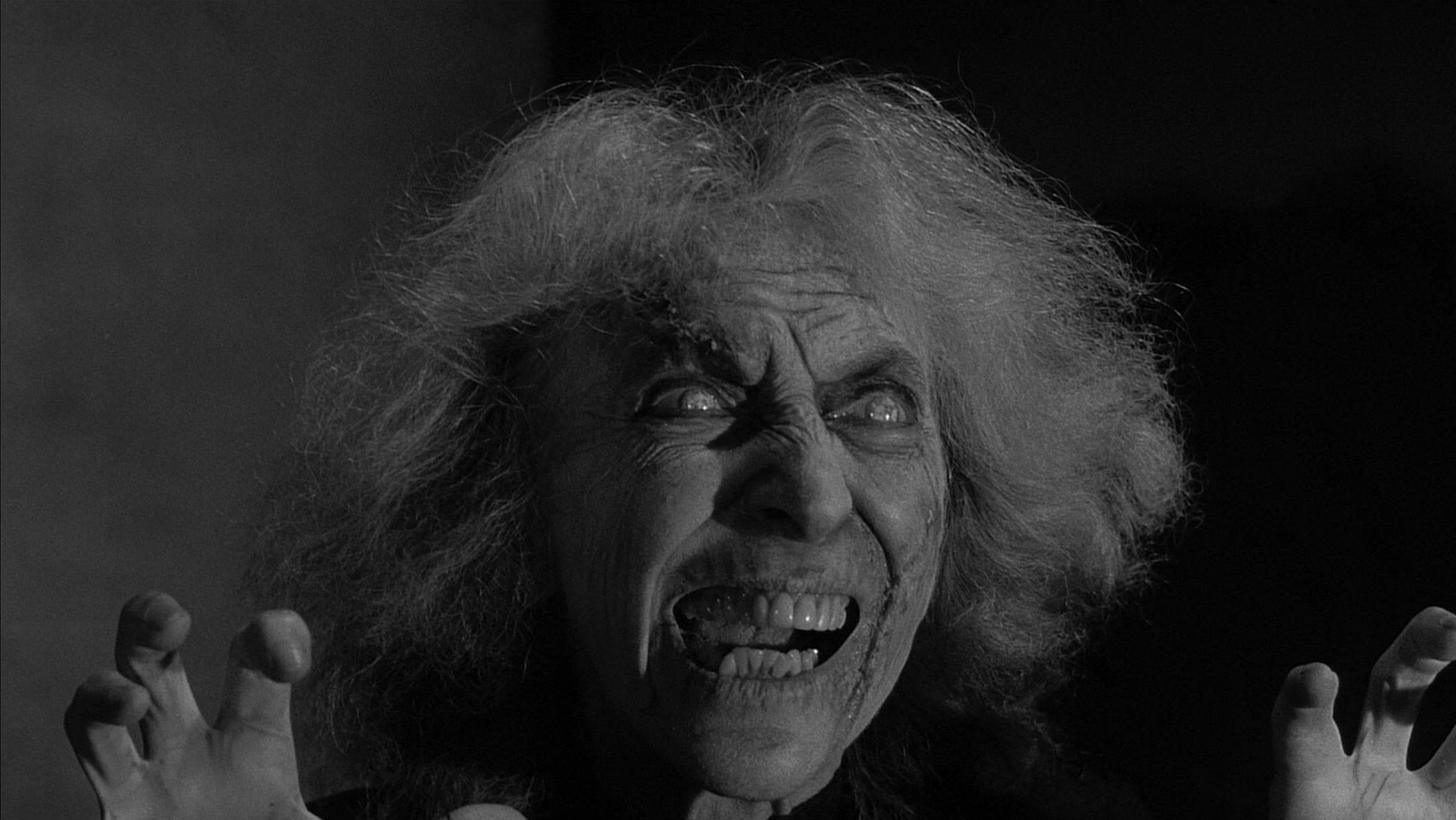
An eccentric millionaire named Frederick Loren (Vincent Price) and his wife Annabelle—actually, it’s his fourth wife, because the first three died under suspicious circumstances—invite five people to stay in his creepy mansion on Haunted Hill for one night. He offers each of them $10,000 if they can survive the night, but he doesn’t tell them that they will be locked inside the house with no way out. At midnight, the doors are locked and the five participants are put through unimaginable terrors with no way of contacting the outside world. The film was directed by William Castle, who was known for his promotional gimmicks—in this case, it was “Emergo,” a skeleton on a string who sailed out over the theatrical audience at pivotal moments.
8. The Thing From Another World (1951)
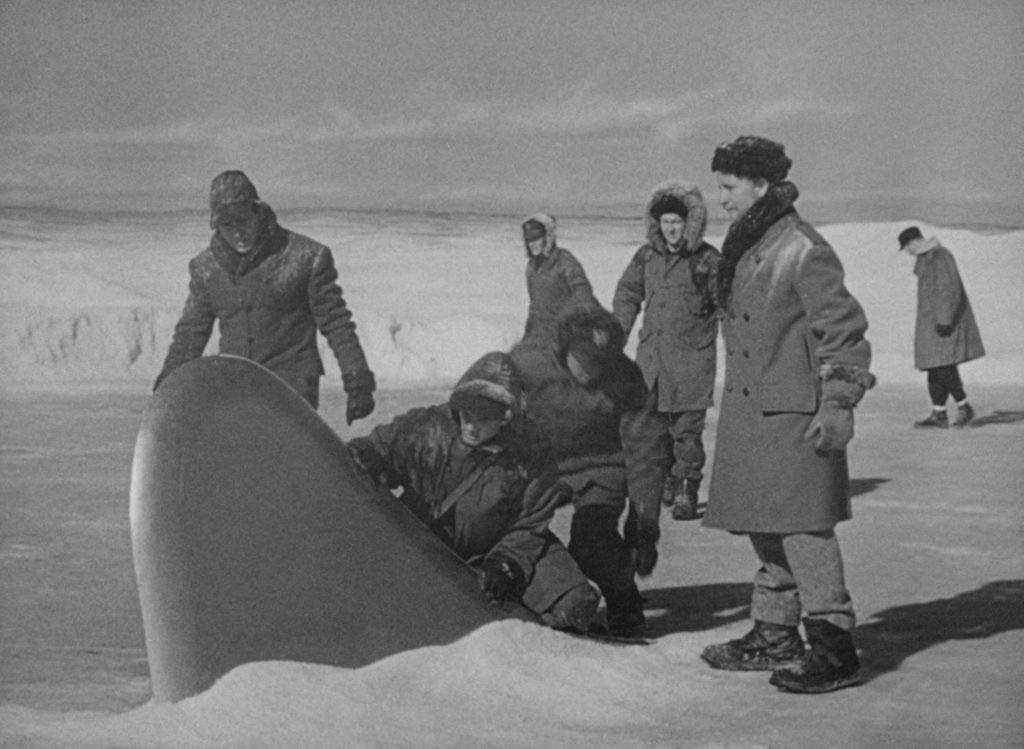
Members of the American Air Force are summoned to a remote outpost in the Arctic Circle where a UFO has crashed. When they arrive, they unexpectedly encounter an alien being frozen in the ice near the downed craft—a giant bald-headed alien being (James Arness, who would later go on to TV fame as the town sheriff in the long-running Western hit series Gunsmoke). The alien is taken back to base, and when he thaws out, he begins attacking everything within reach. A scientist, however, cautions against killing him, believing that he will be more valuable alive than dead. Produced by legendary filmmaker Howard Hawks and based on the novella Who Goes There by John W. Campbell, this is considered the first of the innumerable “giant alien seeks to destroy planet Earth” films of the 1950s.
7. A Bucket of Blood (1959)
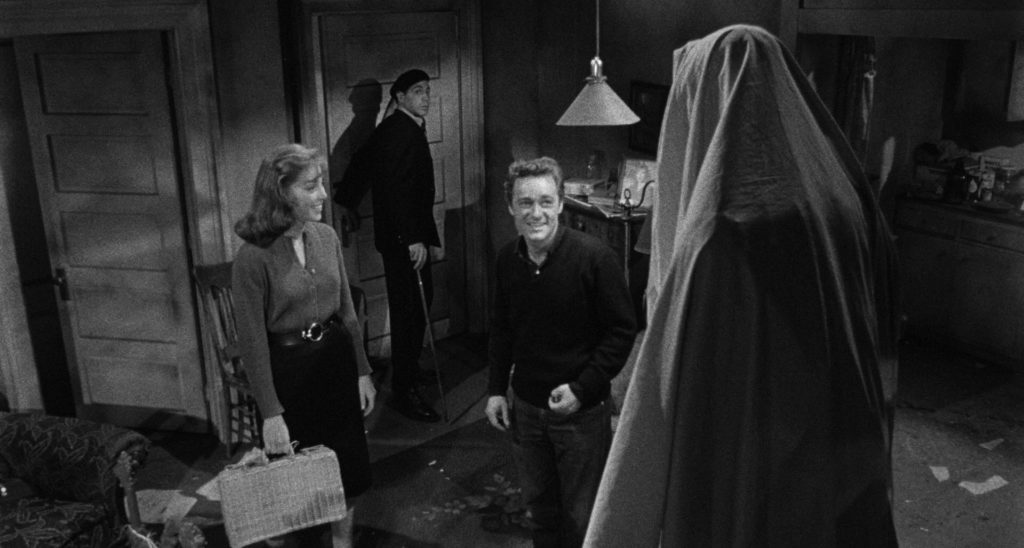
This horror-comedy by legendary schlock director Roger Corman stars Dick Miller as Walter Paisley, a socially awkward busboy at a beatnik cafe who accidentally kills his landlady’s cat, covers it in plaster to hide the evidence, and has it mistaken as a work of surreal art called “Dead Cat,” leading him to undeserved and ironic fame. When he is pressured to deliver sequels to his “masterpiece,” people start disappearing—but his fame increases with each new macabre “sculpture.”
6. Dracula (aka Horror of Dracula) (1958)
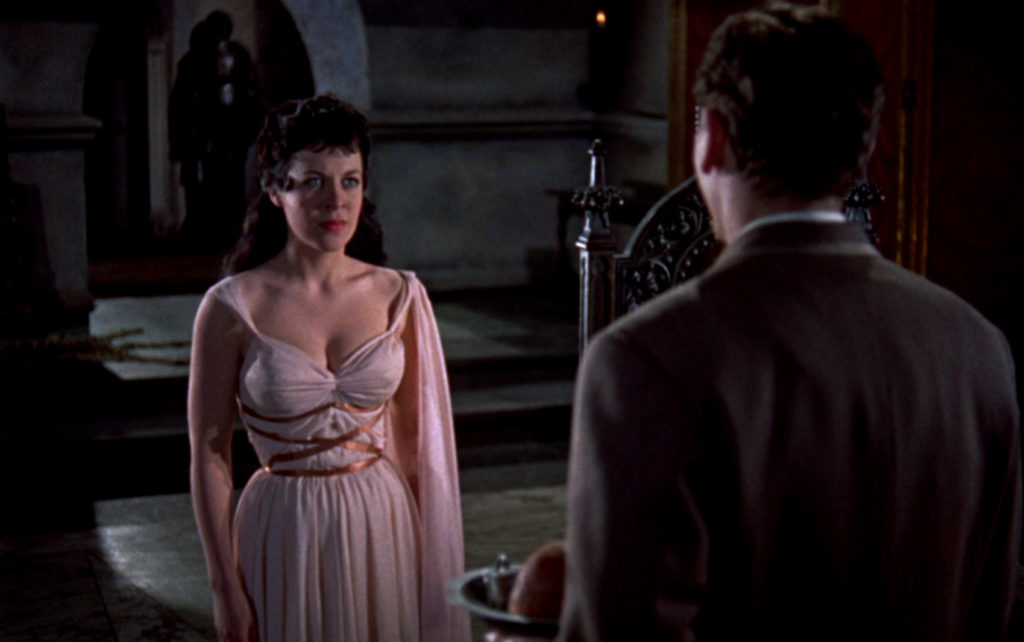
Released in England merely as Dracula but in America as Horror of Dracula to avoid copyright conflicts with the 1931 version featuring Bela Lugosi, this is the first of eight Hammer Horror productions about Dracula, seven of which starred Christopher Lee as the Count. It would also be the first of four Hammer films starring Peter Cushing as the vampire hunter Van Helsing. Lee was able to make the character his own, focusing on the fangs and an open sensuality that was only hinted at in Lugosi’s rendering and was entirely absent from Max Shreck’s super-creepy 1922 performance as the vampire in Nosferatu.
5. Curse of the Demon (1957)
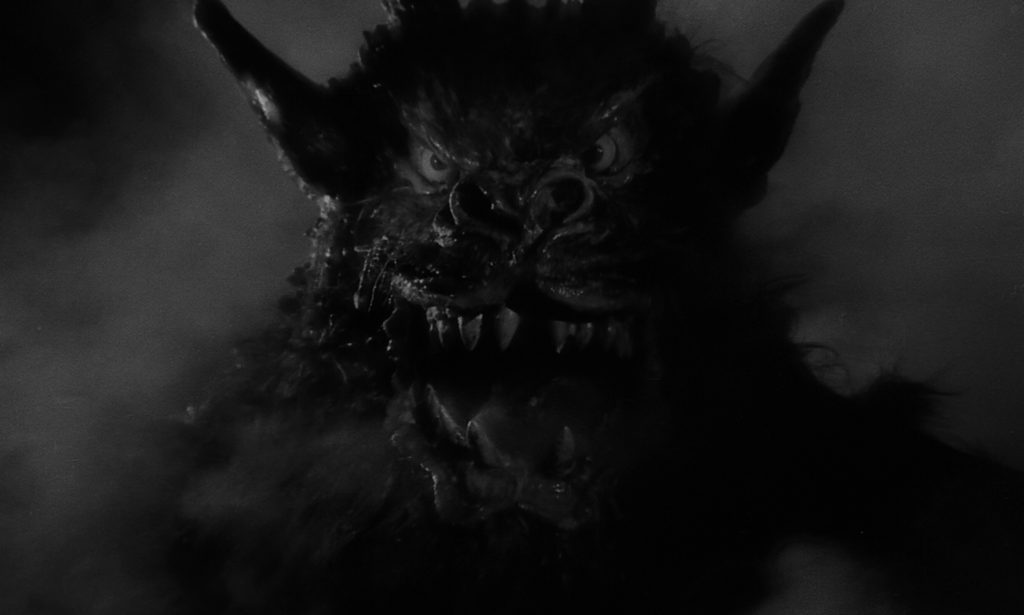
An American psychologist named John Holden (Dana Andrews) travels to London to attend a conference about the supernatural with the ulterior motive of exposing a satanic cult leader named Julian Karswell (Niall MacGinnis). Although he does not believe in Satan and thinks that Karswell is a fraud, he accepts an invitation to stay at Karswell’s house and, after Karswell slips an ancient Runic curse written on parchment into Holden’s clothes, Holden gradually comes to be absolutely terrified by what he starts to sincerely believe are Karswell’s legitimate demonic powers. Also released as Night of the Demon.
4. House of Wax (1952)
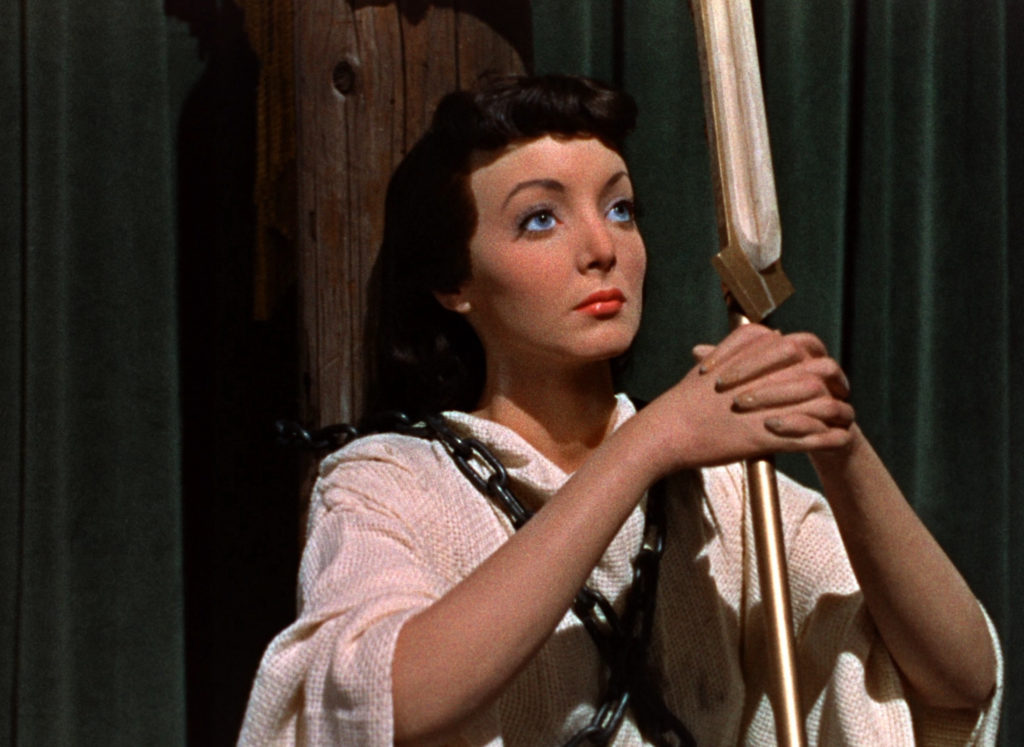
Professor Henry Jarrod (Vincent Price) is an earnest sculptor who creates disturbingly lifelike wax figures. Jarrod’s business partner Matthew Burke (Roy Roberts) is tired of their museum’s lack of profits, so Burke sets fire to the museum to try to claim the insurance money. Jarrod, who was believed to have perished in the fire, reemerges 18 months later and opens a new exhibit—this one more morbid than the last. As his new exhibit accrues more specimens, bodies begin disappearing from a local mortuary. House of Wax was remade in 2005.
3. Them! (1954)
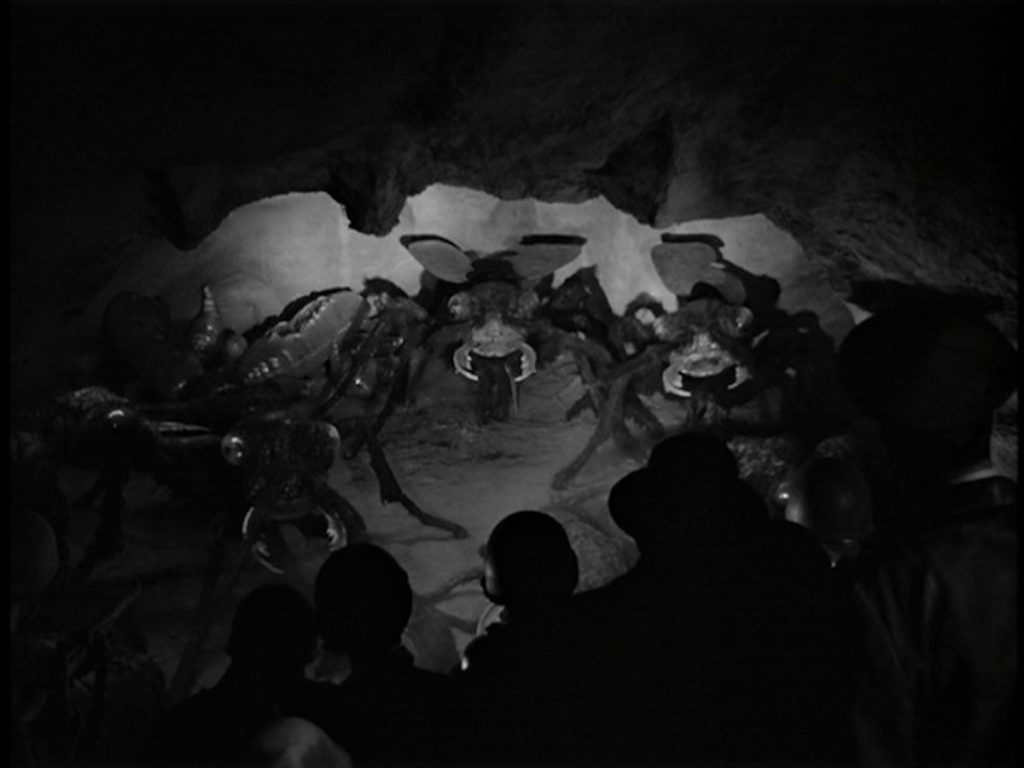
This is one of the earliest and best of a spate of “giant nuclear monster” films throughout the 1950s. The radiation from the original atomic tests in Alamogordo, New Mexico caused subterranean ants to mutate and grow to be monsters that threaten to destroy humanity. Local police encounter a small, traumatized girl wandering through the desert who screams “THEM!” when she catches a whiff of formic acid—which is what ants use to destroy their prey. The police also discover a number of missing persons including a vacationing FBI agent. A team is sent to investigate, and they destroy a local nest of the ants, but not before a pair of queen ants has flown away. The film then switches to Los Angeles, where the ants have infested the underground sewer system. Will the US military be able to kill the mutant ants before all hope for humanity is lost?
2. Invasion of the Body Snatchers (1956)
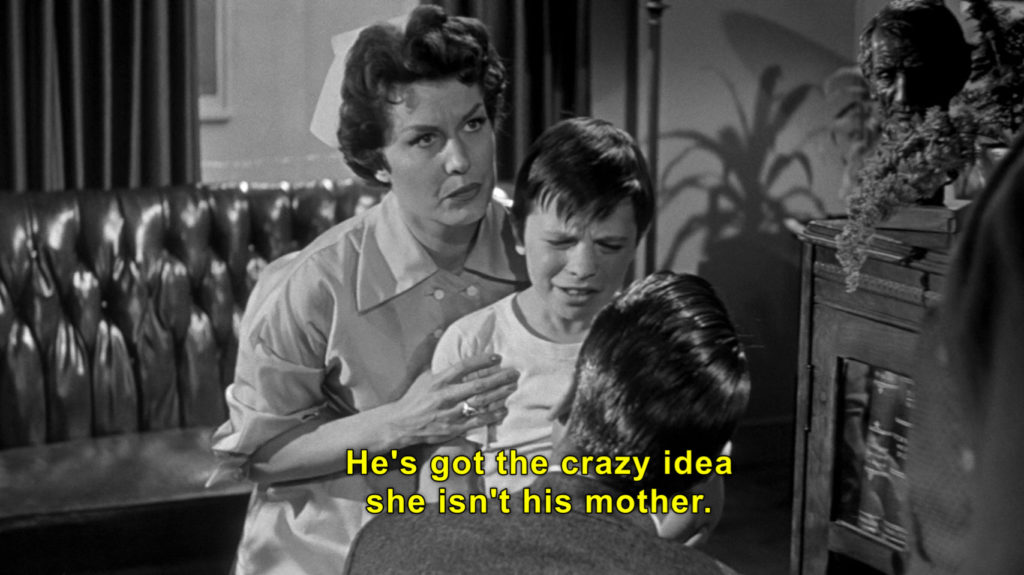
In this sci-fi horror film based on the 1954 novel The Body Snatchers, Kevin McCarthy stars as Dr. Miles Bennell, a small-town doctor who becomes entangled in a sinister plot after several citizens in his hometown of Santa Mira, California begin exhibiting signs of Capgras delusion, which is a psychiatric condition wherein people believe that their relatives have been replaced by impostors. It turns out this isn’t a case of mass hysteria—the citizens are being taken over by “pod people” from outer space who seek to colonize the planet Earth. The film was remade in 1978 with Donald Sutherland in the role of Dr. Bennell.
1. Godzilla (1954)
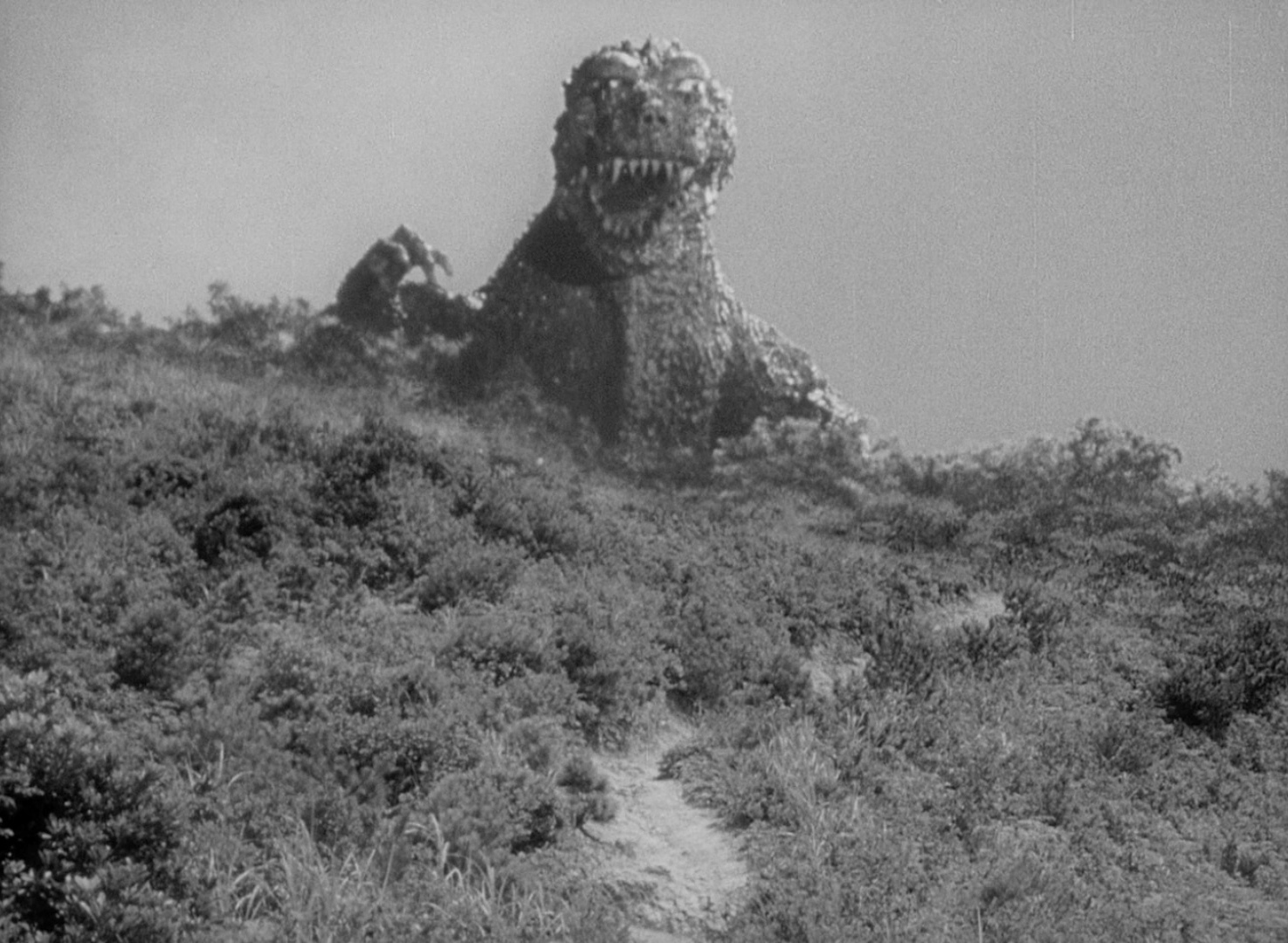
The first in the long-running Japanese genre of kaiju films in which giant monsters attack major cities and other giant monsters, Godzilla, AKA Gojira, is best seen as an allegory of Japan having to deal with the trauma of being the only country attacked by nuclear weapons in war. There would be several Godzilla sequels, as well as other kaiju films featuring Rodan (giant Pterosaur), Ghidorah (three-headed giant flying dragon), Mothra (giant flying moth), and Gamera (giant flying turtle), as well as many others, lasting well into the modern era. In 1956, a heavily edited version with new footage and English dialogue was released in the USA and titled Godzilla, King of the Monsters.
Hammer Horrors

British film production company Hammer was founded in 1934 but didn’t begin its grand experiment in horror until the mid-1950s. As the decade began, Hammer was best known for its mysteries, comedies, and crime thrillers. That all changed in 1955 with the release of The Quatermass Xperiment. The violent and gruesome sci-fi monster movie sought to push the limits of what was acceptable to show on screen at the time by embracing Britain’s relatively new “X” rating (for “extremely graphic”). Their plan worked, and The Quatermass Xperiment set a worldwide stage for some of the greatest movies in horror history.
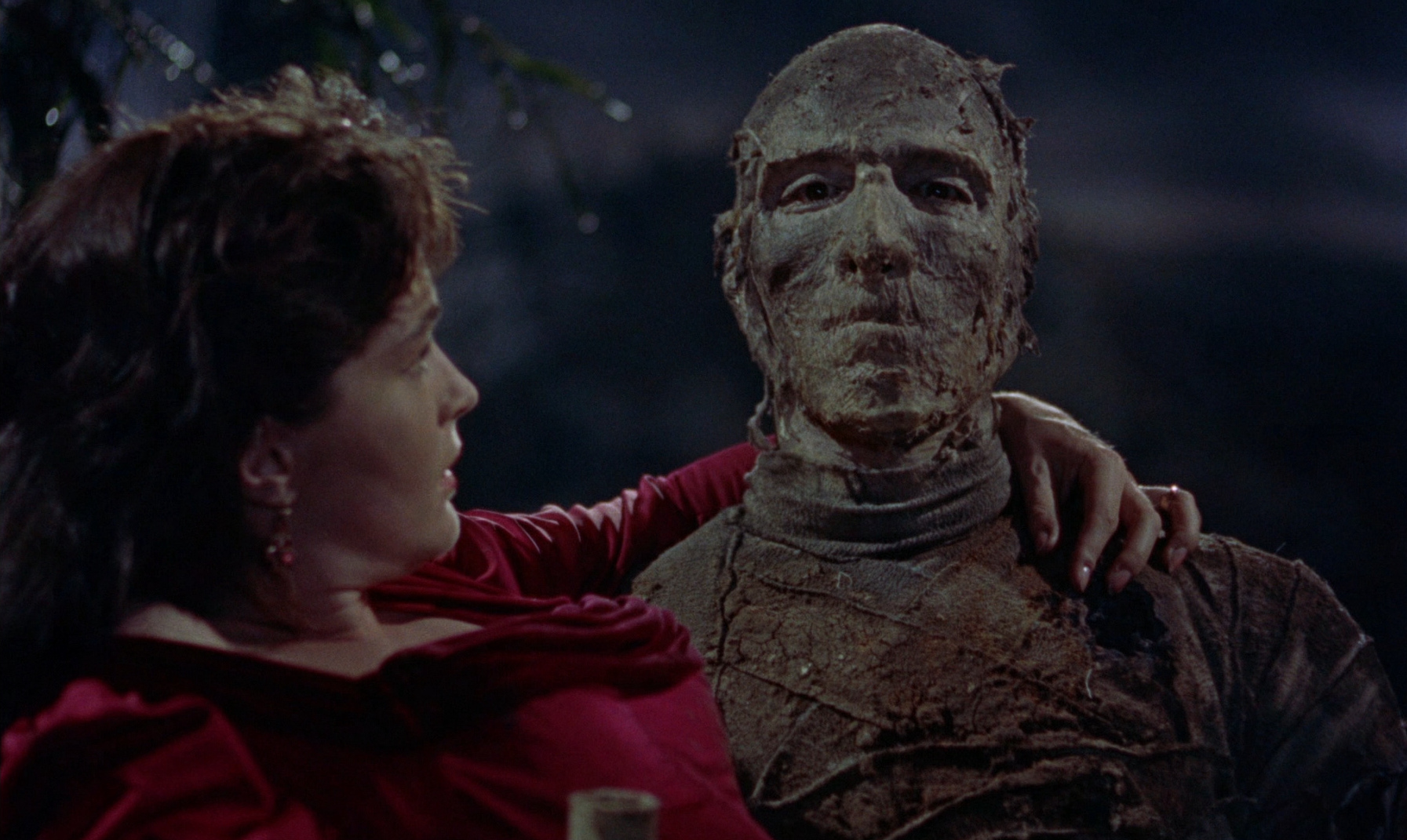
Hammer’s best and most prolific days in horror came in the 1960s, but the company’s fright-film output in the late 1950s helped establish the foundation for what was to come. The company began to gravitate toward some of the classic monsters made popular by Universal Studios, and in 1957 Hammer produced The Curse of Frankenstein. The movie is a loose adaptation of Mary Shelley’s Frankenstein novel, but fears of copyright infringement with Universal pushed Hammer to make their film and monster quite different from Universal’s classic films. The precautions helped give Hammer its own unique identity, as it modernized monster movies for a new audience.
An agreement with Universal was reached in 1958 around the same time Hammer gave Dracula an updated treatment. From that point on, Hammer was more free to use classic monsters, and they did so while expanding into new territory. Before the 1950s were over, Hammer released The Mummy in 1959 while continuing to shift their previous focus on crime and mystery toward something more horrific. Hammer is remembered for pushing against the boundaries of mainstream horror and creating a series of films that influenced the world. While much of the world was focused on aliens and giant monsters throughout the 1950s, Hammer was turning back toward the monsters of the past to create timeless scares.
More Horror Movies from 1950s
- War of the Worlds (1953) H. G. Wells’s end of the world story is brought to technicolor and updated for the nuclear age and Cold War in this sci-fi masterpiece.
- Robot Monster (1953) is a notoriously bad sci-fi movie about an alien creature which is played by a person in a gorilla suit wearing a space helmet.
- Bride of the Monster (1954) in this low-budget classic from Ed Wood, Jr. (Plan 9 From Outer Space), Bela Lugosi stars as an evil scientist hell-bent on creating a battalion of superhuman mutants.
- The Snow Creature (1954) American scientists searching for the legendary yeti in the Himalayas capture him and bring him to Los Angeles, where he escapes.
- The Night of the Hunter (1955) is technically a psychological thriller, but Robert Mitchum’s portrayal of a sadistically demented preacher pushes it into the bounds of horror. Directed by Charles Laughton, who portrayed Quasimodo in 1939’s The Hunchback of Notre Dame.
- Diabolique (1955) in this French thriller that helped inspire Alfred Hitchcock’s Psycho, a high-school principal’s wife and mistress plot to kill him.
- Rodan (1956) is an early Japanese giant-monster movie and the first to feature the giant flying Pterosaur of the title.
- The Bad Seed (1956) is, like The Night of the Hunter, also a psychological thriller, but 11-year-old Patty McCormack’s portrayal of a cold-blooded killer also classifies this as a horror movie.
- From Hell It Came (1957) is one of the only films in history that features a walking tree as a monster.
- Attack of the Crab Monsters (1957) B-movie king Roger Corman directed this low-budget film about scientists on a remote island who are suddenly besieged by murderous, oversized crustaceans.
- The Black Scorpion (1957) an earthquake unleashes gigantic man-eating scorpions from a cavern in Mexico.
- Beginning of the End (1957) gigantic grasshoppers attack and threaten to destroy Chicago. Directed by Bert I. Gordon (initials “B.I.G.”), whose specialty was oversized humans and monsters in other films such as King Dinosaur (1954) and The Amazing Colossal Man (1957).
- Plan 9 from Outer Space (1957) was Bela Lugosi’s final film (even though the footage used of him was originally intended for a different movie). Plan 9 from Outer Space is often ranked as one of the worst movies ever, but its enduring appeal makes that accolade more of a positive than a negative.
- The Blob (1958) a gelatinous substance feeds on all life in its path, and only a young Steve McQueen is able to save humanity.
- Attack of the 50 Ft. Woman (1958) a spurned wife is exposed to a UFO and grows large enough to wreak vengeance against her husband and the other woman.
- Macabre (1958) a doctor desperately searches through a cemetery at night, hoping to find and unearth his daughter, who’s been buried alive.
- The Fly (1958) a scientist develops a teleportation device but accidentally is crossbred with a housefly when it flies inside the capsule.
- Frankenstein’s Daughter (1958) Dr. Frankenstein’s grandson places the brain of a beautiful woman inside the body of the beastly monster, which proceeds to terrorize pool parties all throughout LA.
- Fiend Without a Face (1958) experiments with telekinesis lead to a spate of mysterious deaths in a small town near a military base. What invisible monstrosities could possibly be responsible for the murders?
- Killer Shrews (1959) a group of people stranded on a desert island in the middle of a storm find themselves attacked by a carnivorous pack of giant shrews.
- The Tingler (1959) stars Vincent Price as a doctor who seeks to thwart a parasitic monster who feeds on people’s spinal cords but can be destroyed if they scream.
- The Giant Gila Monster (1959) a gigantic Mexican beaded lizard preys upon the young lovers and hot-rodders of a small Texas town.
- Ghost of Dragstrip Hollow (1959) a group of fun-loving rockabilly thugs are evicted from their clubhouse and take residence in a haunted mansion.
- La Llorona (1959) was released in Mexico as La maldición de la Llorona (The Curse of the Crying Woman) and is based on an old Mexican folk legend about the ghost of a woman who haunts waterfront areas in search of the children she drowned.
